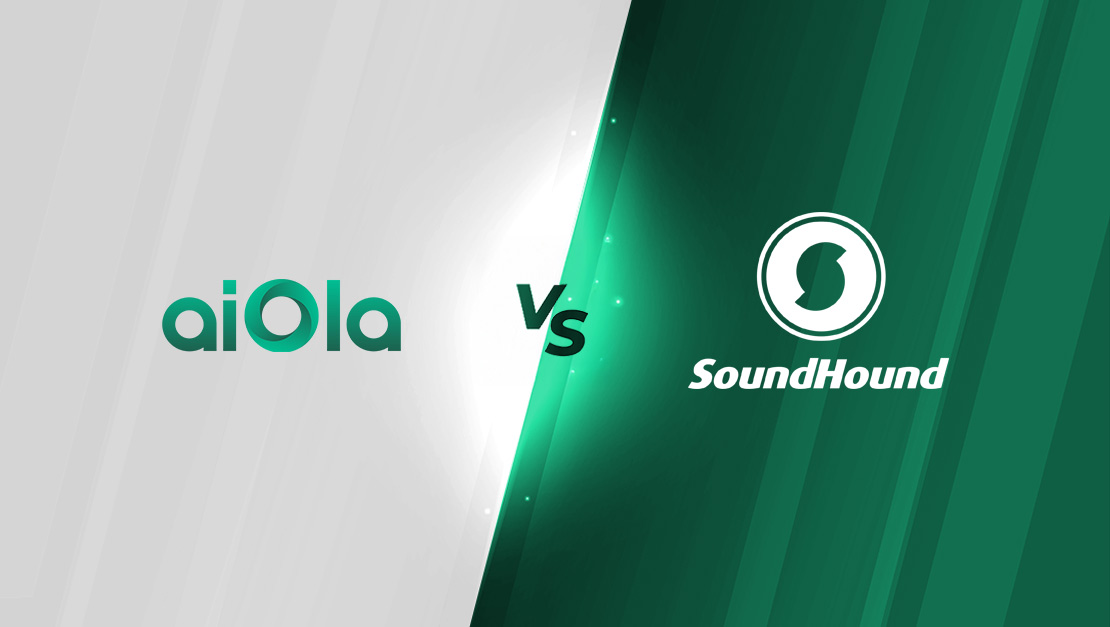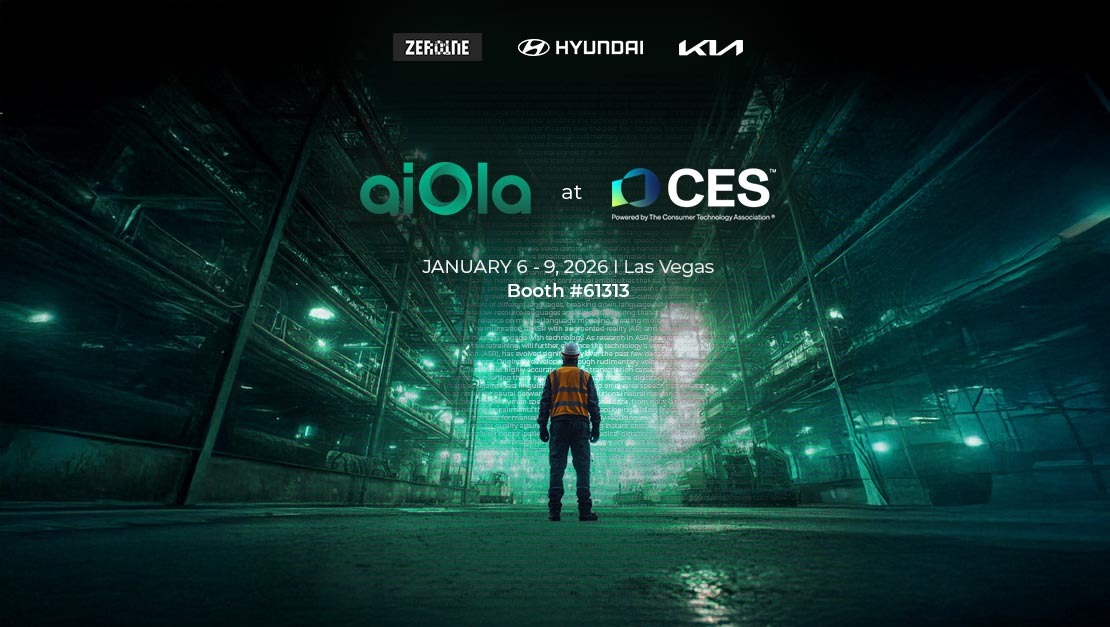When choosing between aiOla vs SoundHound, the real question isn’t which one can transcribe speech, it’s which one can understand it in the real world and integrate into existing systems and workflows.
For enterprises managing aviation inspections, factory workflows, or multilingual call centers, accuracy, compliance, and real-time responsiveness matter far more than surface-level transcription.
In this deep dive, we’ll break down how aiOla and SoundHound differ across critical dimensions like accuracy, jargon handling, data privacy, and workflow automation. By the end, you’ll see why aiOla is quickly becoming the go-to voice AI for complex enterprise environments, where “just words” aren’t enough. You need actionable data.
What Is aiOla vs SoundHound?
Before we compare aiOla vs SoundHound, let’s take a look at what each of these platforms offer:
aiOla
aiOla was built specifically for enterprise-grade voice automation and not for consumer applications or chatbots. The platform turns unstructured speech into structured, actionable data in real time. Manual processes that required writing and typing are replaced by agentic workflows, powered by voice.
Frontline workers across aviation, manufacturing, and pharmaceuticals use aiOla to document tasks hands-free, using only their voice. The system recognizes domain-specific jargon, filters noise, and instantly populates reports, tickets, and dashboards.
aiOla’s Voice Agentic Flow architecture allows it to listen, interpret, and act automatically, thus bridging the gap between speech and business systems.
SoundHound
SoundHound started as a consumer-focused voice assistant platform, best known for its music recognition app and the Houndify voice AI suite. Today, it offers developers APIs for speech-to-text, natural language understanding, and custom wake words, and enabled agentic workflows, thanks to Amelia.
SoundHound’s strength lies in conversational experiences, like in-car assistants, quick-serve restaurant kiosks, and consumer devices. It’s powerful for brand-specific voice experiences, but less focused on the high-compliance, multi-language needs of industrial or enterprise workflows.
Comparing aiOla vs SoundHound
Below, we break down the main differences between aiOla vs SoundHound across the metrics that matter most for enterprise buyers:
Voice Agentic Workflows
aiOla introduces a concept called Voice Agentic Flow, where speech directly triggers structured workflows, like opening a safety ticket, logging a machine error, or escalating a maintenance alert. It’s not just transcription; it’s speech-driven automation that operates at the edge. Not to mention, aiola works on top of existing systems and workflows, with zero disruption.
SoundHound, in contrast, focuses on dialogue management. Its AI can answer queries, respond conversationally, or handle basic voice commands. However, it doesn’t automatically execute structured enterprise tasks without additional integration layers.
Use Cases
aiOla serves highly regulated industries that rely on accuracy, traceability, and hands-free operation: aviation, manufacturing, food & pharma, logistics, and call centers. It thrives where real-time documentation and compliance are critical.
SoundHound is popular in automotive voice assistants, hospitality kiosks, and consumer electronics, where natural conversation enhances user experience rather than compliance or reporting accuracy.
AMI Meetings & Collaboration
aiOla’s agentic transcription can handle multi-speaker meeting environments (AMI datasets) with real-time speaker tracking and diarization. The AI separates speakers, timestamps dialogue, and tags action items automatically which is ideal for enterprise collaboration.
SoundHound supports voice recognition for group conversations, but its diarization accuracy is not optimized for compliance-grade meeting transcription or action tracking.
English Speech Recognition Across Datasets
aiOla achieves top-tier performance across standard English datasets and custom enterprise benchmarks. It adapts dynamically to accents, dialects, and field terminology.
SoundHound performs well in conversational English but can struggle in noisy, jargon-heavy, or multi-accent enterprise settings.
Speech-to-Text API
Both platforms offer APIs, but their targets differ.
SoundHound’s Houndify API is designed for developers embedding conversational voice into apps and devices. There is no public benchmarks for their STT capabilities.
aiOla’s API, however, is built for enterprise systems integration, feeding structured outputs directly into ERP, CRM, and compliance software. It handles live streaming, multilingual transcription, and data structuring simultaneously. aiola’s Jargonic surpasses competitors, as demonstrated by benchmark testing.
ASR Performance and Word Error Rate (WER)
Generic automatic speech recognition (ASR) models lack accuracy in noisy environments. aiOla consistently reports 95%+ accuracy, even in industrial or multi-speaker conditions.
Its noise-trained acoustic modeling and real-time keyword spotting detect critical terms, like “fuel leak,” “machine fault,” or “temperature deviation,” and classify them automatically.
SoundHound’s accuracy is strong for conversational or customer service speech, but it is not specialized for domain-specific jargon or multi-language industrial settings.
Number of Supported Languages
aiOla supports 120+ languages, accents, and dialects with real-time switching and multi-lingual transcription. It’s ideal for global operations.
SoundHound supports fewer languages, focusing primarily on English and select European and Asian languages.
Efficiency and Latency
In enterprise contexts, speech-to-text latency can make or break usability. aiOla’s NVIDIA-accelerated infrastructure delivers sub-second latency, meaning tasks trigger almost instantly.
SoundHound’s processing is optimized for conversational timing but can show higher latency in complex, noisy environments or when handling multiple speakers simultaneously.
Accuracy in Real-World Environments
aiOla’s models are trained in factories, airports, and logistics hubs, not just labs. Its AI understands overlapping voices, background machinery, and dynamic acoustic patterns.
SoundHound offers accurate recognition in quiet or moderate environments but is not tuned for extreme noise or real-time field conditions.
Enterprise-Grade Jargon Recognition
One of aiOla’s greatest differentiators is its zero-shot learning for jargon recognition. Without retraining, it can interpret specialized terminology in aviation, food safety, pharma, manufacturing, and other industries.
SoundHound’s models can be trained for specific vocabulary, but that requires manual dataset creation and retraining cycles, making it slower and costlier for large enterprises.
Performance in Noisy, Multi-Speaker Environments
In a hangar, warehouse, or call center, overlapping voices and ambient noise are constant. aiOla’s models handle these seamlessly, using real-time speaker tracking and acoustic modeling.
SoundHound’s focus remains on conversational interactions, so performance tends to dip in chaotic, multi-speaker scenarios.
Data Privacy & Compliance
aiOla is built for compliance from the ground up, with automatic masking, secure on-premise deployment, and certifications for GDPR, HIPAA, and SOC 2. Enterprises can keep sensitive data within their infrastructure.
SoundHound offers standard cloud-based data privacy protections but doesn’t provide the same level of customizable, enterprise-specific compliance configurations.
API Integration and Extensibility
Both solutions have APIs, but aiOla’s APIs are enterprise-ready, supporting structured outputs, metadata tagging, and secure authentication layers.
SoundHound’s APIs are excellent for embedding voice into consumer experiences but offer less flexibility for system-to-system automation across enterprise tools.
Real-Time Operation
aiOla’s computing capabilities ensure instantaneous speech processing, even in offline or hybrid environments. That’s crucial in industries like aviation or defense, where internet connectivity may be limited. This means that you can transform your critical enterprise workflows to be speech-powered and automated with nothing more than speech.
SoundHound primarily operates through cloud-based inference, which can introduce slight delays and limit use in restricted-network environments.
From Unstructured to Structured Data
This is where aiOla truly stands apart. It doesn’t stop at transcription. It transforms unstructured spoken language into structured, report-ready data. Every phrase becomes a field, tag, or record in a business system.
SoundHound captures and interprets speech well, but it doesn’t natively convert it into structured enterprise data without external post-processing.
Acoustic Modeling and Noise Handling
aiOla’s NVIDIA-accelerated ASR models leverage advanced acoustic embeddings that adapt in real time to shifting environments. Whether a speaker moves between a quiet office and a factory floor, accuracy remains consistent.
SoundHound’s acoustic modeling is highly capable for static environments but less adaptive when soundscapes change dynamically.
Multilingual, Multimodal Support
aiOla offers multi-language transcription and translation on the fly, enabling bilingual report generation, like English-Spanish safety forms in aviation. It can also integrate voice with vision systems for multimodal analytics.
SoundHound supports multilingual interactions but is not optimized for structured translation workflows at the enterprise level.
Overall Efficiency and ROI
aiOla’s focus on real-time automation means measurable ROI: faster documentation, fewer compliance errors, and reduced manual labor. By turning speech into data instantly, enterprises capture intelligence that’s often lost in emails or handwritten logs.
SoundHound’s ROI lies more in customer experience, helping brands create natural voice interactions. For back-office efficiency, however, it requires additional layers of integration.
Closing Thoughts on aiOla vs SoundHound
SoundHound has made its mark in consumer voice assistants and branded conversational experiences. For enterprises seeking workflow automation, compliance, and real-time data intelligence, however, aiOla stands in a different category altogether.
aiOla’s NVIDIA-accelerated, multilingual, and jargon-aware platform enables seamless voice-to-action workflows, capturing every spoken word, structuring it instantly, and feeding it into enterprise systems with sub-second latency. It’s built not for casual interactions but for mission-critical operations, where accuracy and accountability are everything.
When looking at aiOla vs SoundHound, while SoundHound shines in personalized voice engagement, aiOla dominates where it matters most to global enterprises, turning natural speech into trusted, actionable intelligence that drives safety, compliance, and efficiency across every industry.
See how aiOla can power your voice-driven workflows. Request a live demo.













